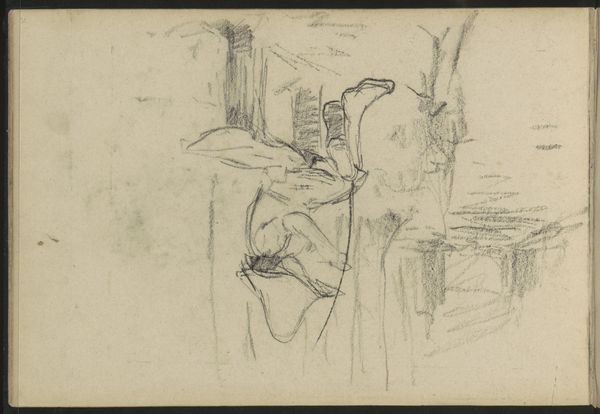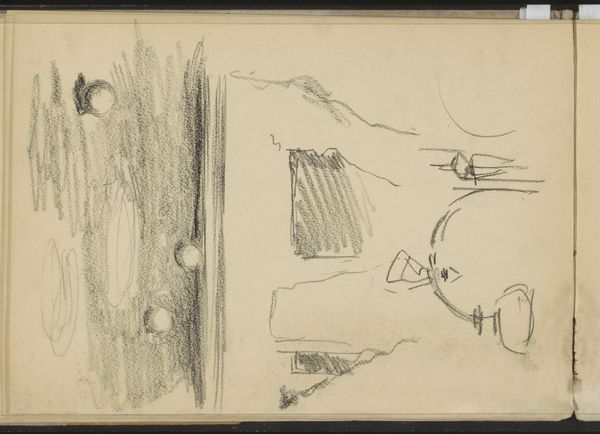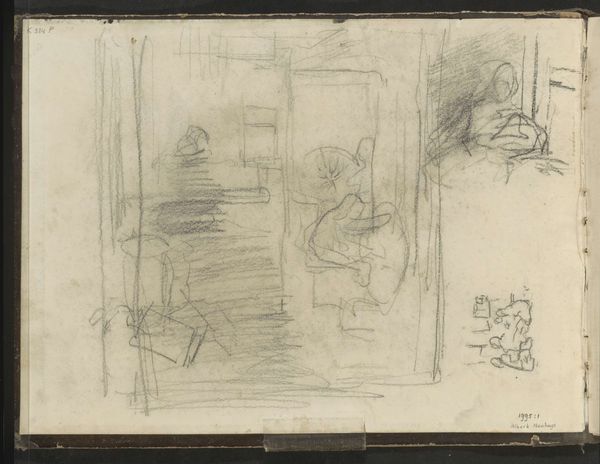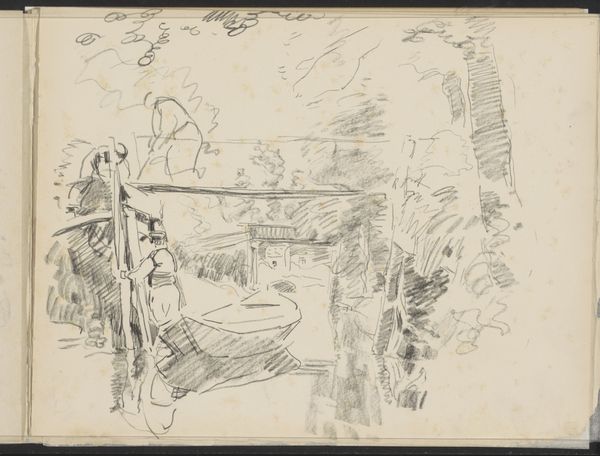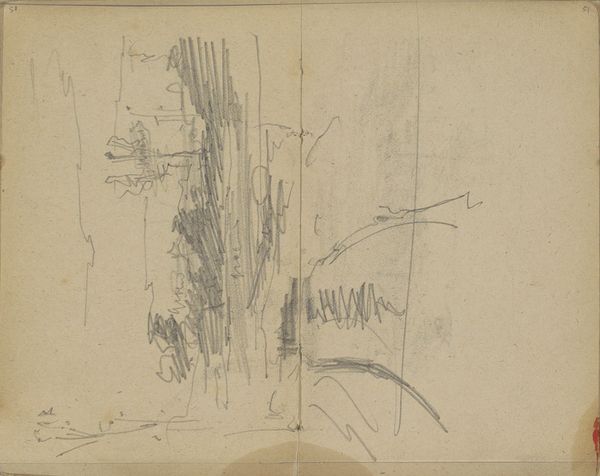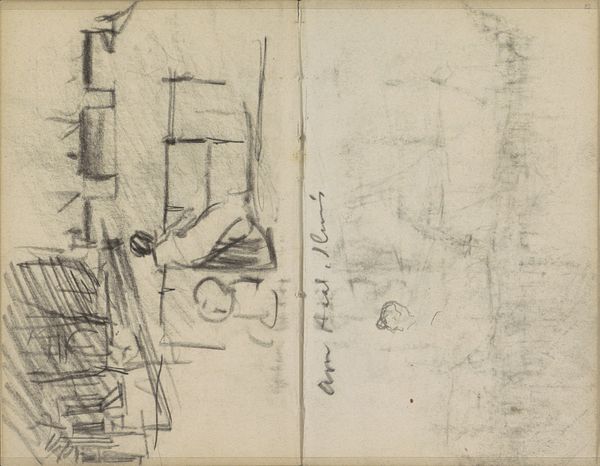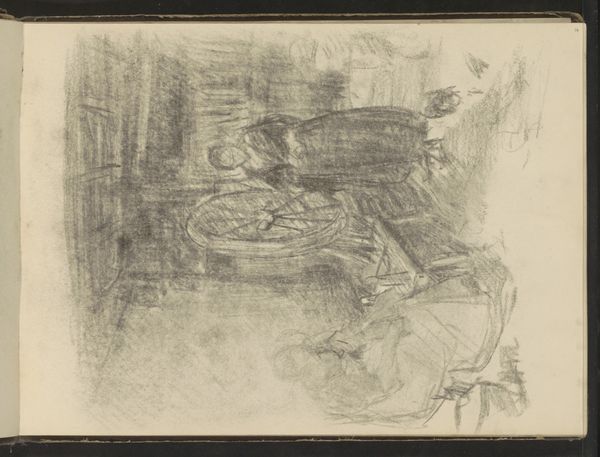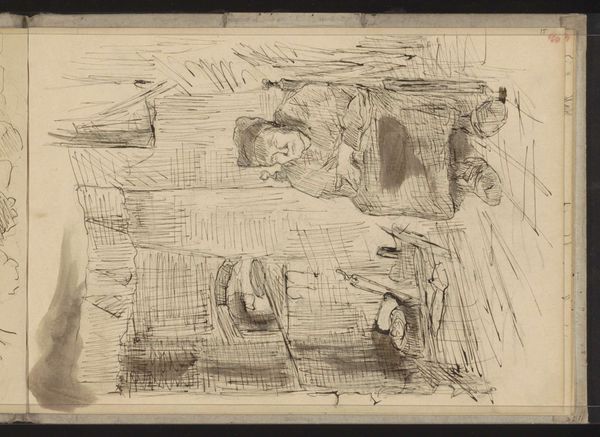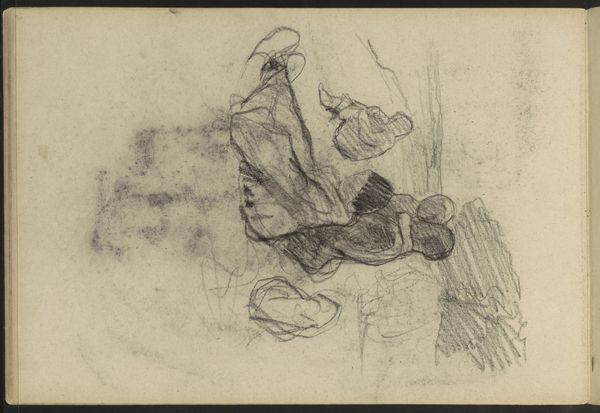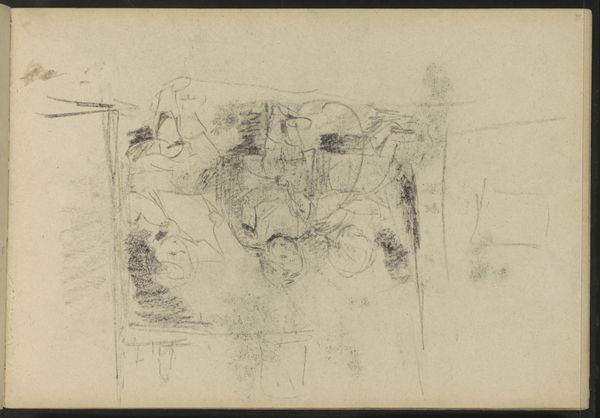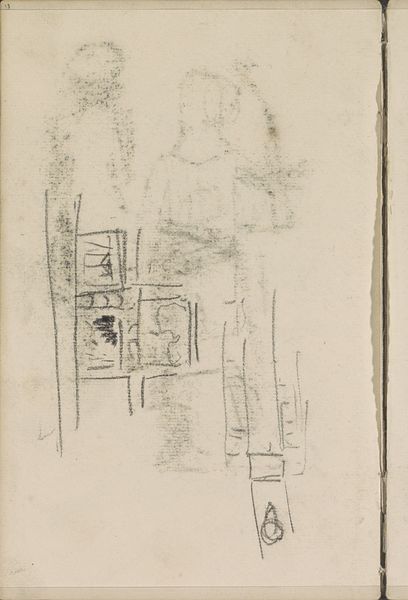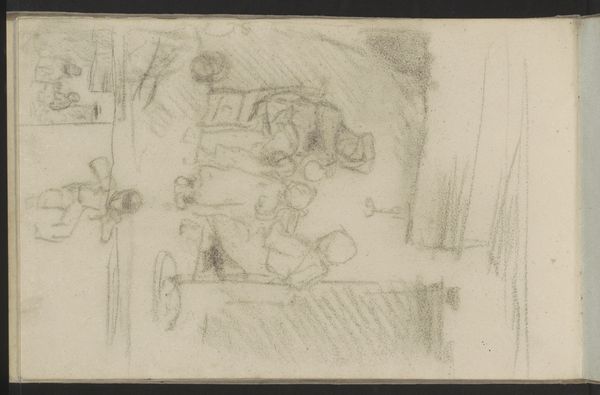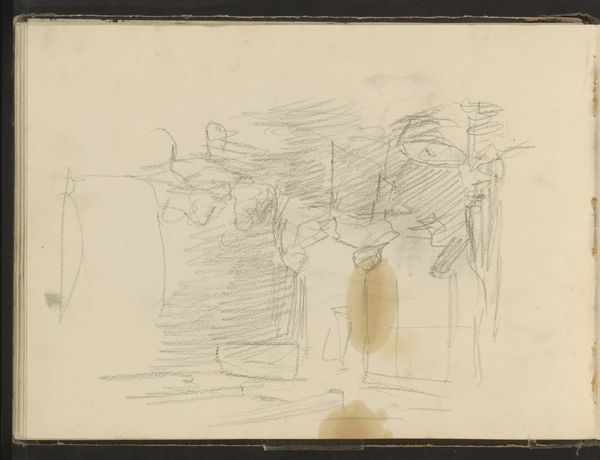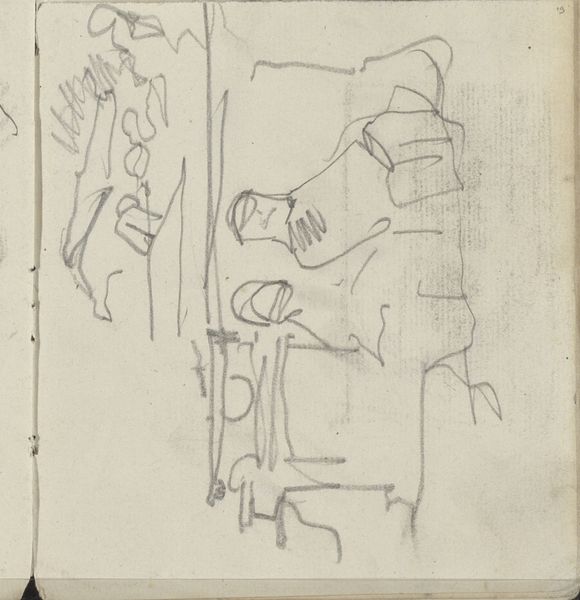
#
amateur sketch
#
light pencil work
#
pen sketch
#
pencil sketch
#
incomplete sketchy
#
personal sketchbook
#
ink drawing experimentation
#
pen-ink sketch
#
sketchbook drawing
#
sketchbook art
Copyright: Rijks Museum: Open Domain
Curator: Willem Witsen created this pen and ink sketch, titled "Knielende vrouw bij een boerderij," sometime between 1884 and 1887. Editor: The first thing that strikes me is the immediacy of the marks. It feels so raw and unrefined, almost as though we're peering directly into Witsen's sketchbook and witnessing his process of visual thinking unfold. Curator: Exactly! It gives us unique insight into the artist’s methods. We're not seeing a polished, finished product, but a preliminary study focused on form and composition. Think about the material conditions here: simple paper, readily available ink and pen. Editor: Yes, and what it suggests about the availability, or perhaps, the economic situation of both the artist and subject matter: two women. The kneeling posture often denotes labor, submission. The women are likely involved in agrarian work. Consider the social strata implicit in Witsen depicting them – he, the educated artist; they, the toiling laborers. Curator: The means of production speak volumes! Look at the energy conveyed in the line work. The hurried quality suggests that the image was made on-site, recording his fleeting experience. It seems he wanted to capture the relationship between these figures and their environment – specifically the farm, or 'boerderij' in the title. The way Witsen used the layering of the pen strokes to depict the heavy load. It emphasizes the physical labor the women undertake, and highlights class division, rural labor, and how that labor interacts with architecture and agriculture. Editor: Absolutely. It brings forth the critical importance of understanding these historical frameworks when looking at art, the relationship between gender, labor and landscape. How do the interlocking relationships, like agriculture, and class intersect to shape people's existence? We can't divorce these observations from how women, particularly, have been subjected to and exploited by such complex power dynamics for centuries. Curator: It reminds us that art isn't made in a vacuum. It’s a testament to art's inextricable links with socio-economic structures. This work becomes more resonant when we recognize how it’s entangled in labor dynamics and the realities of late 19th century Netherlands. Editor: And for me, it prompts reflection on whose stories are visualized, and the critical questions of gender, class, and representation in the art world today.
Comments
No comments
Be the first to comment and join the conversation on the ultimate creative platform.
